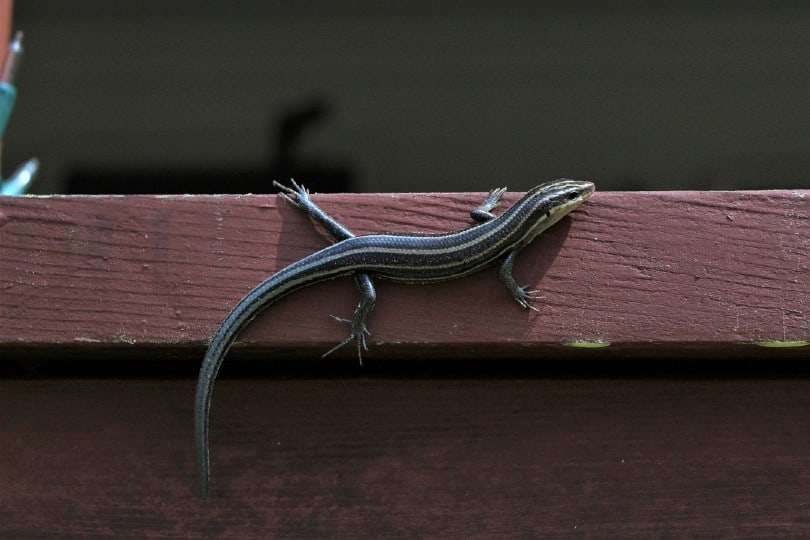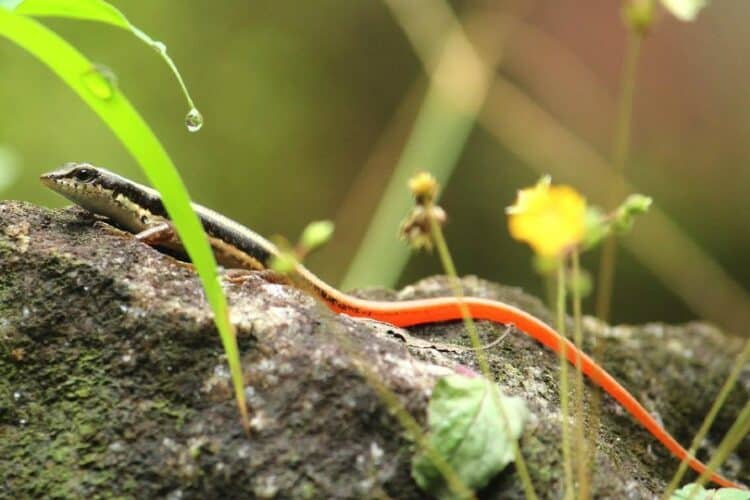Skinks are secretive burrowers that tend to hide or flee when they encounter predators, but that doesn’t mean dogs won’t ever find one. Whether your dog has too much interest in a new pet or a backyard discovery, some dogs will try to chase and eat them.
If your dog does catch a skink, don’t worry—these lizards aren’t very appetizing, but they aren’t poisonous.
What are Skinks and Where are They Found?
Skinks are an extremely common family of lizards. Skink species tend to be small- to medium-sized lizards with small legs that love to burrow and dig into safe underground nests. They are found across most of the United States and on every continent except Antarctica. Some species of skinks also are common pets, especially the blue-tongued skink. These lizards make great terrarium pets because they are calm and easy to care for. Your dog might encounter skinks in the backyard or other natural areas.
Why Do Dogs Chase Skinks?
Dogs often have a strong prey instinct and will chase small animals. Skinks can be fast, wiggly, and brightly colored—just the kind of thing that gets dogs excited. Some dogs will “catch and release” small animals, but others will be interested in eating their catches instead. If your dog is a hunter, a wiggling lizard might look like an exciting snack and toy all rolled into one.

Dangers of Eating Skinks
Overall, skinks are pretty safe for your dog to eat. They aren’t poisonous, and they can’t cause serious harm to dogs. However, some skinks have parasites or bacteria, such as salmonella, that can cause mild harm to your dog. This might include vomiting and diarrhea, stomach pain, and other problems. If your dog does pick up a bug from a skink, it will likely pass within a day or two.
Skinks also have some defense mechanisms from predators. Many skinks will drop their tail to escape from predators, a relatively harmless defense. But if that doesn’t work, some skinks will bite back at whatever is attacking them. Their bite is usually not enough to break the skin, but if it does, you should clean the wound and watch for infection.
What Should I Do if My Dog Eats a Skink?
If your dog does eat a skink, you most likely don’t have to worry about it. Watch for signs of stomach distress such as vomiting or diarrhea. If symptoms persist for longer than a day or two, consider bringing your dog to a vet to make sure that it isn’t something more serious. Also, bring your dog in if blood is present in the vomit.
If your dog gets bitten by a skink and the bite breaks the skin, wash out the wound with clean water. You can also apply a non-stinging antiseptic to the wound to prevent infection. If signs of infection appear, go to a vet for treatment.
Last Thoughts
If your dog is a chaser, he might go after a skink at some point. Overall, chasing lizards should probably be discouraged. The off-chance of your dog getting sick is a good reason to avoid them. However, if your dog does eat a skink, don’t be too worried. They aren’t poisonous and aren’t likely to carry more bacteria than any other wild animal.
Featured Image Credit: Pixabay














